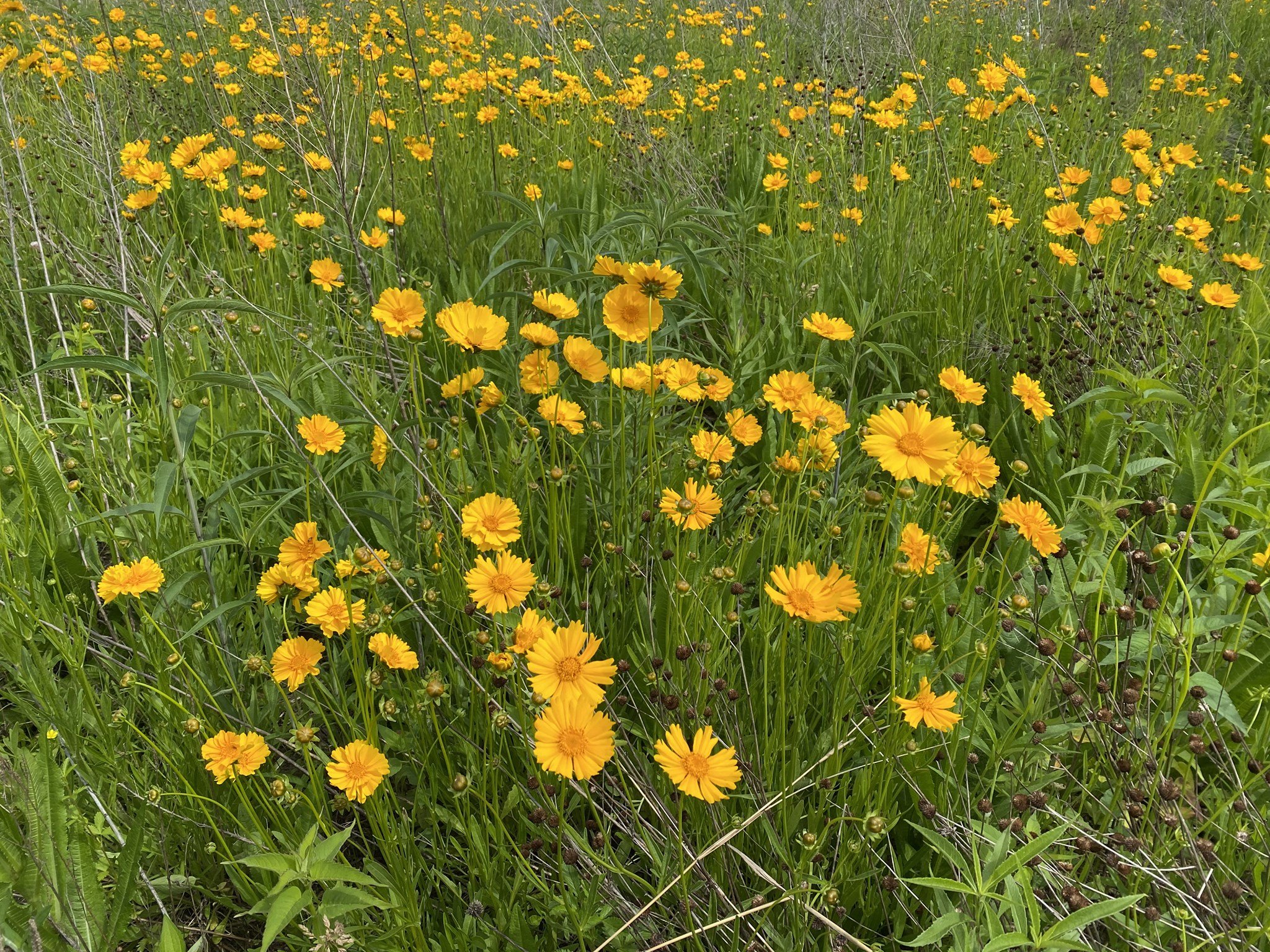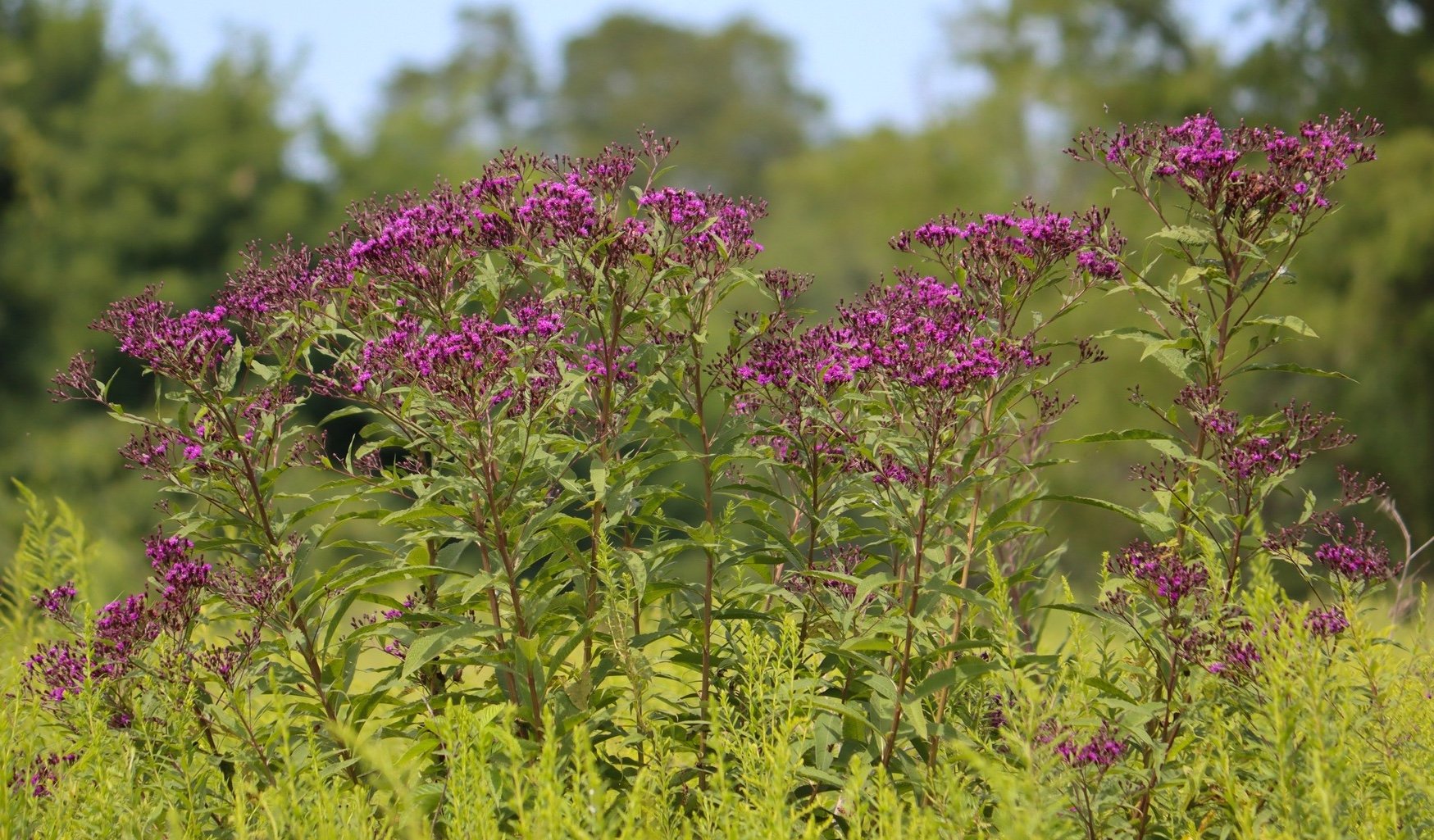Southeastern Seedmix Species List and Description
Our Seed Mixes are temporarily sold out and will be back in stock in June 1st, 2024
Introduction
This seed mix has a balance of low moisture adapted species, intermediate moisture adapted species, and saturated or seasonally saturated soil adapted species so that no matter the moisture level of your soil; the seed mix will be successful. This diversity of species also has the sunlight adaptability to succeed with as little as 4 hours of direct sunlight a day the same as a full day of sunlight. All of our seed mixes have a ratio of 95 : 5 Wildflower seeds to Grass Seeds. This high percentage of native wildflowers ensures long-term balance of wildflowers and grasses without burning and without Elk (or Bison further west) who would historically help keep the grass dominance in balance with their selective grass grazing behavior. Seed Mixes with higher ratio of native grass seed are often doomed to become mostly grass with fewer and fewer wildflowers as it matures without the presence of large grass grazers such as Elk or Bison. When it come to how your native seed mix will look while in bloom; the dominance and presence of one wildflower species to another depends on the light conditions, soil moisture, and soil type. So this seed mix will mature differently aesthetically from site to site due to the high diversity of wildflowers.
Spring into Early Summer Blooming Species
Golden Alexanders Zizia aurea, Ohio Spiderwort Tradescantia ohiensis, Blue Wild Indigo Baptisia australis, White Wild Indigo Baptisia alba, Lanceleaf Coreopsis Coreopsis lanceolata, Foxglove Beardtongue Penstemon digitalis, Blackeyed Susan Rudbeckia hirta, Butterfly Milkweed Asclepias tuberosa, Common Milkweed Asclepias syriaca
Notes: Native Meadows do not bloom profusely in early spring, but by mind spring this combination of wildflowers will welcome you to the warm seasons with yellows, golds, whites, and purples/blues. By early summer, Butterflyweed and Common Milkweed will begin a parade of blooming for pollinators and wildlife that lasts into fall.
Tap on the pictures below to enlarge the Spring into Early Summer blooming species example pictures of the Southeastern Seedmix.
Midsummer Blooming Species
Wild Bergamot Monarda fistulosa, Narrowleaf Mountainmint Pycnanthemum tenuifolium, Grey Headed Coneflower Ratibida pinnata, Purple Coneflower Echinacea purpurea, Oxeye Sunflower Heliopsis helianthoides, Culver's Root Veronicastrum virginicum, Maryland Senna Senna marilandica, Marsh Blazing Star Liatris spicata, Blue Vervain Verbena hastata
Notes: The southeastern selection of midsummer blooming species will be competitive long-term in the native meadow setting squeezing out weeds with long lived and semi-aggressive native species such as Slender Mountain Mint, Maryland Senna, Culver’s Root, and Wild Bergamot. The other species of this season reproduce through reseeding and shorter lifespans of 3 to 8 years. Together they form a matrix of midsummer blooming species that will sustain itself long-term in the battle against non-native species.
Tap on the pictures below to enlarge the Spring into Midsummer blooming species example pictures of the Southeastern Seedmix.
Late Summer Blooming Species
Partridge Pea Chamaecrista fasciculata, Common Boneset Eupatorium perfoliatum, Orange Coneflower Rudbeckia fulgida, Mistflower Conoclinium coelestinum, Joe Pye Weed Eupatorium fistulosum, Tall Coreopsis Coreopsis tripteris, Giant Ironweed Vernonia gigantea, Obedient Plant Physostegia virginiana, Stiff Goldenrod Solidago rigida, Purplehead Sneezeweed Helenium flexuosum
Notes: Late summer is often a difficult season to find native wildflowers in degraded environments. The late summer selection includes very drought tolerant species capable of blooming in late summer drought such as Obedient Plant, Stiff Goldenrod, Partridge Pea, Mistflower, Orange Coneflower, Tall Coreopsis, and Ironweed. And incase you have wet areas, we include species that will bloom in wetter soils of later summer including again Mistflower, Obedient Plant, and Ironweed in addition to Joe Pye Weed, Purple Headed Sneezeweed, and Common Boneset.
Tap on the pictures below to enlarge the Spring into Late Summer blooming species example pictures of the Southeastern Seedmix.
Early Fall Blooming Species
Dwarf Goldenrod Solidago nemoralis, New England Aster Symphyotrichum novae-angliae, Showy Goldenrod Solidago speciosa, Arrowleaf Aster Aster sagittifolius, Aromatic Aster Aster oblongifolius, Frost Aster Aster pilosus, Narrowleaf Sunflower Helianthus angustifolius
Notes: The aesthetic headliner for the early fall blooming species is Narrowleaf Sunflower. This native perennial sunflower puts on the largest display of flowers out of any species in this native meadow seed mix welcoming late season foraging pollinators. Narrowleaf Sunflower is exclusive to the Southeastern Seed mix because it is mostly only native to the southeast of the U.S. Narrowleaf Sunflower is completed by 4 asters species and 2 more Goldenrod species in addition to Stiff Goldenrod providing a good balance and wide adaptability of fall blooming species.
Tap on the pictures below to enlarge the Early Fall blooming species example pictures of the Southeastern Seedmix.
Native Grasses and Sedges (Less than 5% of total Seedmix)
Fox Sedge Carex vulpinoidea, Little Bluestem Schizachyrium scoparium, Indiangrass Sorghastrum nutans, Virginia Wild Rye Elymus virginicus
Notes: Grasses and Sedges become over dominant in the absence of grazers such as Bison, Elk, and Muskrat (Sedges). To prevent these species from lowering diversity and becoming over dominant, they are only 5% or less of the total seeds in the seed mix. We also omitted Big Bluestem as it’s too aggressive and tall for the urban, suburban, rural residential native meadow context.
Tap on the pictures below to enlarge the Sedge and Grass species example pictures of the Southeastern Seedmix.








































